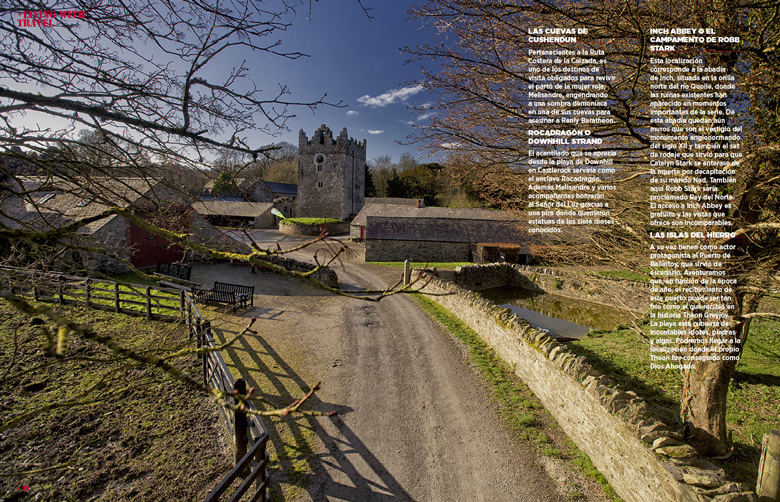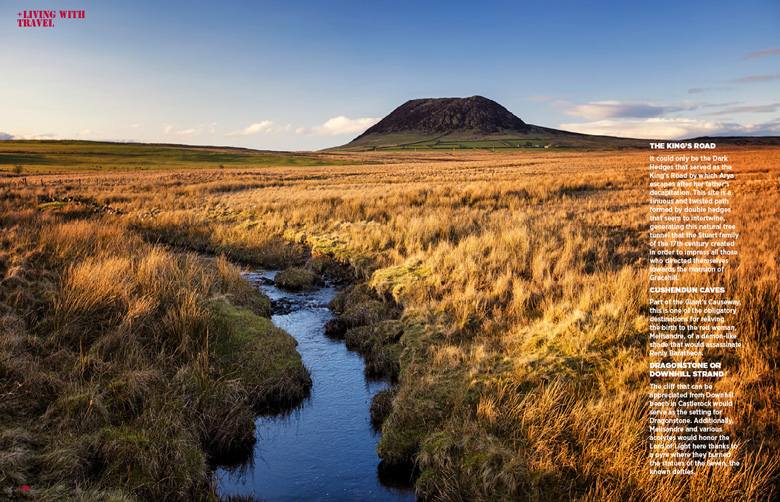Ireland, land of legend.
Northern Ireland, from Tolkien to George R.R. Martin, is without a doubt the best backdrop for telling a medieval story, of dragons or even more ancient and fantastic…
The sequoias of its dense forests serve as an incomparable setting for a battle, a forge of knights or a pact with dragons.
This time, it’s Game of Thrones that has chosen locations in Northern Ireland for the filming of its final season. Castle Ward, the Cushendun Caves, the Dark Edges and Tollymore Forest Park, Inch Abbey, or Antrim Plateau: all decisive settings for completing the fantastic magic of the work of George R.R. Martin.
Needless to say, even if Game of Thrones has been filmed in locations in Spain, it has turned to and principally used Northern Ireland as the source of the scenes for filming. You could even say that the West is to Northern Ireland what Daenerys is to her dragons.
Already considered to be a full-fledged tourist destination, we’re going to briefly go through the settings that have served to give life to the most successful series in history.

Tollymore Forest Park
A shiver runs down our spine upon recalling the Night Watch’s encounter with the White Walkers in the series’ prologue.
A magic place where we can share with Bran the dream in which he pursues the three-eyed raven. It is also here where the direwolf pups will be found by the Starks.

Winterfell
The place where King Robert Baratheon and his Lannister entourage arrive to end the tranquil peace enjoyed by the Starks is, in our time and reality, Castle Ward. In fact, the Castle of House Stark is confined to this long-standing property, situated in County Down, on the banks of the Strangford Lough.
This distinguished place was the site of the location shots of the Stark stronghold, where Bran would be instructed by his father to use a bow.
As a result, a real touristic offer to fire a bow currently exists in front of Winterfell’s clocktower, run by William van der Kells himself, the same archer who instructed the actors how to use the bow with a certain skill.

The King’s Road
It could only be the Dark Hedges that served as the King’s Road by which Arya escapes after her father’s decapitation.
This site is a sinuous and twisted path formed by double hedges that seem to intertwine, generating this natural tree tunnel that the Stuart family of the 17th century created in order to impress all those who directed themselves towards the mansion of Gracehill.

Cushendun Caves
Part of the Giant’s Causeway, this is one of the obligatory destinations for reliving the birth to the red woman, Melisandre, of a demon-like shade that would assassinate Renly Baratheon.
Dragonstone or Downhill Strand
The cliff that can be appreciated from Downhill beach in Castlerock would serve as the setting for Dragonstone.
Additionally, Melisandre and various acolytes would honor the Lord of Light here thanks to a pyre where they burned the statues of the Seven, the known deities.

Inch Abbey or Robb Stark’s camp
This location corresponds to Inch Abbey, situated on the North Bank of the Quoile River, where the existing ruins have appeared in important moments of the series.
From this abbey remain walls that are vestiges of the Anglo-Normand monument of the 12th century, and also the setting of the scene where Catelyn Stark found out about the death by decapitation of her husband Ned.
Here too would Robb Stark be proclaimed King in the North. Access to Inch Abbey is free and the views it offers are incomparable.

The Iron Islands
These islands have as protagonist the Ballintoy Harbour, which serves as the setting. We would venture a guess that, depending on the season, the welcome in this harbour can be as cold as that in the story of Theon Greyjoy.
The beach is covered with countless islets, rocks and algae. We can find the location where Theon devoted himself to
the Drowned God.

